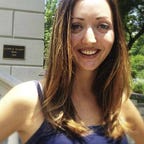SF elections are working — and getting even better
Note: This op-ed was originally published in the SF Examiner. It was written by Charlotte Hill, Christopher Jerdonek and Viva Mogi, three members of the San Francisco Elections Commission.
With high voter interest in the June 5 mayoral election, we three San Francisco elections commissioners want to report on the election and San Francisco’s future plans. We hope this provides the public with additional transparency around our election process.
In 2002, a Charter amendment established the Elections Commission, empowering it to set general policies for the Department of Elections and supervise the Director. Our seven members are each appointed by different elected bodies: the Board of Education, Board of Supervisors, City Attorney, District Attorney, Mayor, Public Defender, and Treasurer.
First, despite initial reports in local media that voter turnout was low, the Department of Elections estimates that turnout will in fact be about 53 percent of registered voters — the second highest vote total in San Francisco mayoral election history, and one of the highest rates of participation. Turnout across California, meanwhile, is expected to be around 36 percent.
The mayor’s race undoubtedly drove this higher turnout. San Franciscans cast more ballots for mayor than for governor and U.S. Senator. As in previous elections, voters made ample use of the “ranking” feature of our ranked choice voting (RCV) system. Eighty-five percent of voters ranked at least two candidates, and nearly seven in 10 ranked their top three candidates. More than nine in 10 voters chose a candidate who made it to the final round of the election.
We know this because the Department of Elections makes the anonymous records of voters’ rankings available to the public, allowing researchers and observers to monitor and analyze our elections. Through this data, we know that both mayoral finalists, London Breed and Mark Leno, connected with a broad segment of San Francisco. Each was ranked first, second, or third by more than 60 percent of voters.
Voters made very few errors on their RCV ballots. Only 748 ballots (around 0.30 percent) of the more than 250,000 ballots cast had a disqualifying overvote. This is far smaller than in the non-RCV election for governor, where voters were six times more likely to cast an overvote. Similarly, nearly seven times more voters skipped the non-RCV U.S. Senate race than the mayoral race with RCV.
The current RCV system also facilitated higher voter participation than the previous December runoff system, which San Francisco used until 2004. Under that system, the first election occurred in November, followed by a second race in December if no candidate won an initial majority. Voter turnout often plummeted in the December runoff, on average by 31 percent. In the 2001 runoff for city attorney, less than 17 percent of registered voters participated. In the 1995 mayoral election, the number of voters declined by nearly 10 percentage points from November to December.
Some have asked why San Francisco does not use the “plurality” voting method, in which the highest vote-getter wins. Plurality voting is used to elect many governors, senators, and the president. But if plurality had been used in our mayoral election, the winner would have been elected with less than 37 percent of the vote, with more than 60 percent of voters casting a ballot for another candidate. The goal of any runoff system is to ensure that the winner has a majority (50 percent + 1) of the vote and is the candidate preferred by the most voters. San Francisco’s “instant runoff” elections fulfill both goals, but without the expense — both for taxpayers and candidates — of a separate runoff election. San Francisco saves approximately $3.5 million by not holding a second citywide election.
Our RCV system also has allowed voters to choose from a more diverse candidate pool. Of the 18 offices in San Francisco elected by RCV, 13 are held by office-holders of color, a significantly higher proportion than before RCV implementation. One study found that the other Bay Area cities using RCV — Oakland, Berkeley and San Leandro — have seen similar results. A few years ago, Oakland elected its first-ever Asian-American woman as mayor, and San Francisco just elected an African-American female mayor.
Some have expressed concern about the time it took to determine the mayoral winner. But this was due to the closeness of the race — a margin of 1 percent — and the large number of vote-by-mail and provisional ballots, which take longer to process than precinct-cast ballots. It was not due to the RCV system, as it takes only a minute to tally an RCV contest. Notably, San Francisco also had an RCV contest for District 8 supervisor, but the winner was clear on election night because the race was not especially close.
Next year, San Francisco will have new voting equipment with a simpler ballot design that allows voters to rank up to ten candidates. The City also is developing an open-source voting system to maximize security and transparency. We look forward to implementing these long-awaited upgrades and to ensuring that San Franciscans have fair, open, and democratic elections.
